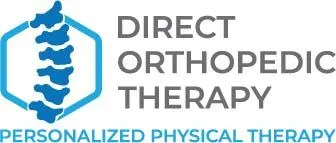Dry needling is a noninvasive therapy used by physical therapists to alleviate pain and restore muscle function. It involves needles puncturing tightened muscle groups known as trigger points to stimulate them and break up any knotted trigger points. Physical therapists use very fine, sterile needles to puncture a trigger point on the muscle, releasing it from pain and allowing the muscle to heal.
What Causes Nerve Damage?
Nerves send signals to your body, providing information on how to move and feel. When these nerves become injured, you may experience numbness or weakness in your hands or feet. You may experience pain, temperature changes, or difficulty pressing buttons. Damage to these nerves is known as peripheral neuropathy. Your healthcare provider can diagnose the source of your nerve injury. Common causes include autoimmune conditions like multiple sclerosis or Guillain-Barre syndrome, as well as traumatic injuries and infections like shingles or HIV.
Drugs and toxins can also cause nerve damage. Chronic kidney disease and dialysis, for instance, may create an imbalance of salts and chemicals in the blood that damage nerves. Furthermore, certain cancers or benign tumors may press on or invade nerves by pressing on them. Genetic conditions like amyloidosis or Fabry disease have been known to lead to peripheral neuropathy as well.
How Can I Prevent Nerve Damage?
Dry needling can effectively treat many muscle injuries and pain conditions. It does this by targeting trigger points – areas of tightness in muscles that can cause spasms or inflammation. Therapists use a thin, solid needle to push into trigger points and surrounding tissue, relieving stiffness and increasing blood flow in the affected area.
Many people experience immediate gratification after a mobile physical therapy session, while others may need several sessions to see the desired outcomes.
Dry needling can be performed correctly and sterilely by a trained therapist who follows proper infection control protocols. When done correctly and efficiently, there is little risk of nerve damage.
Dry needling can often cause soreness or bruising at the injection site. These symptoms usually resolve quickly and do not pose a major health concern.
What Should I Do if I Suffer from Nerve Damage?
Dry needling is an evidence-based treatment method performed by a physical therapist to reduce pain, deactivate trigger points, and restore normal function. It can be used as an isolated technique or part of a larger pain management plan that includes other techniques like exercise, stretching, and massage.
Dry needling is a technique that uses hair-thin needles to stimulate the body’s natural healing response in soft tissues such as muscles and tendons. It can help relieve muscle tension, improve circulation, and reduce inflammation.
A therapist will insert a needle directly into a knotted muscle or trigger point in your skin. The therapist may then move the needle around slightly to try to induce what’s known as a ‘local twitch response’—an involuntary spasm of your muscles.
It may take some time for the treatment to take effect, but many patients find it beneficial. Studies have even demonstrated that combined with other therapies, it can provide remarkable pain relief benefits.
What Can I Do to Prevent Nerve Damage?
Dry needling is a minimally invasive treatment that can relax muscle tightness, increase blood flow, and alleviate local and referred pain. Physical therapists often use it to address muscle discomfort and injuries.
Dry needling is a therapeutic technique in which your physical therapist locates a trigger point and inserts a hair-thin needle. They may move the needle around slightly to try to induce what’s known as a local twitch response—an uncomfortable spasm of your muscle.
Trigger points are small knots in muscles that can cause inflammation, pain, and muscle stiffness. They may develop due to overuse, lack of use, or trauma to the tissue.
When a trigger point becomes sore, its surrounding tissues become acidic, and your nerves become hypersensitive. Stimulating a trigger point with a needle helps draw normal blood supply back to flush out the area and ease tension. If you suffer from back pain sciatica or neck pain, dry needling can be an effective treatment option.
If you want to learn more about dry needling or schedule an appointment, please visit our contact page.



